Lucas Liebenwein
End-to-End Sensitivity-Based Filter Pruning
Apr 15, 2022



Abstract:In this paper, we present a novel sensitivity-based filter pruning algorithm (SbF-Pruner) to learn the importance scores of filters of each layer end-to-end. Our method learns the scores from the filter weights, enabling it to account for the correlations between the filters of each layer. Moreover, by training the pruning scores of all layers simultaneously our method can account for layer interdependencies, which is essential to find a performant sparse sub-network. Our proposed method can train and generate a pruned network from scratch in a straightforward, one-stage training process without requiring a pretrained network. Ultimately, we do not need layer-specific hyperparameters and pre-defined layer budgets, since SbF-Pruner can implicitly determine the appropriate number of channels in each layer. Our experimental results on different network architectures suggest that SbF-Pruner outperforms advanced pruning methods. Notably, on CIFAR-10, without requiring a pretrained baseline network, we obtain 1.02% and 1.19% accuracy gain on ResNet56 and ResNet110, compared to the baseline reported for state-of-the-art pruning algorithms. This is while SbF-Pruner reduces parameter-count by 52.3% (for ResNet56) and 54% (for ResNet101), which is better than the state-of-the-art pruning algorithms with a high margin of 9.5% and 6.6%.
Compressing Neural Networks: Towards Determining the Optimal Layer-wise Decomposition
Jul 23, 2021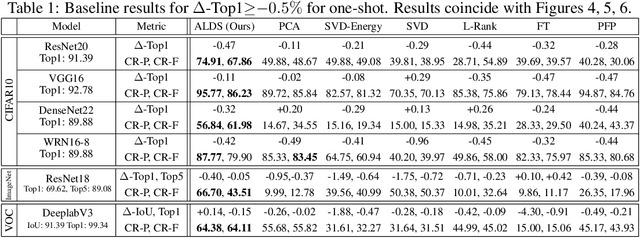

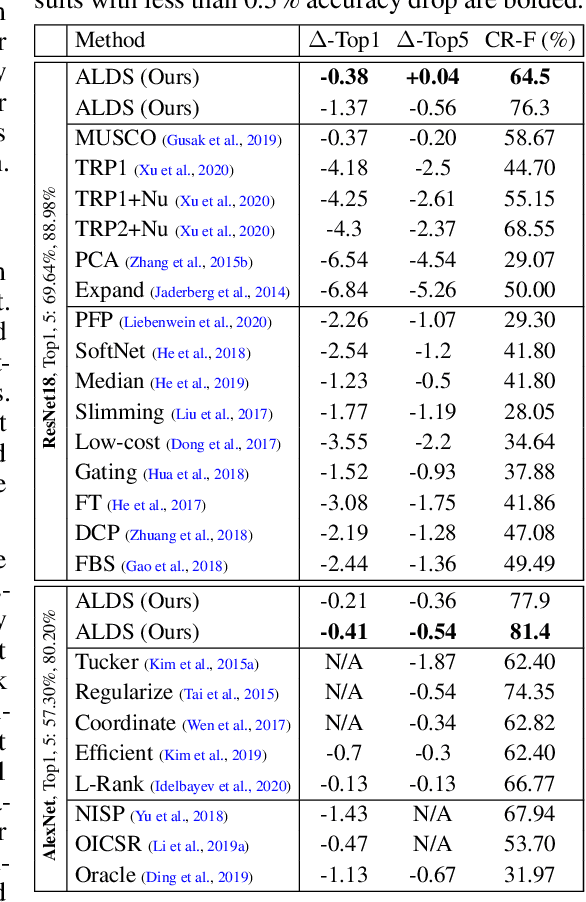

Abstract:We present a novel global compression framework for deep neural networks that automatically analyzes each layer to identify the optimal per-layer compression ratio, while simultaneously achieving the desired overall compression. Our algorithm hinges on the idea of compressing each convolutional (or fully-connected) layer by slicing its channels into multiple groups and decomposing each group via low-rank decomposition. At the core of our algorithm is the derivation of layer-wise error bounds from the Eckart Young Mirsky theorem. We then leverage these bounds to frame the compression problem as an optimization problem where we wish to minimize the maximum compression error across layers and propose an efficient algorithm towards a solution. Our experiments indicate that our method outperforms existing low-rank compression approaches across a wide range of networks and data sets. We believe that our results open up new avenues for future research into the global performance-size trade-offs of modern neural networks. Our code is available at https://github.com/lucaslie/torchprune.
Closed-form Continuous-Depth Models
Jun 25, 2021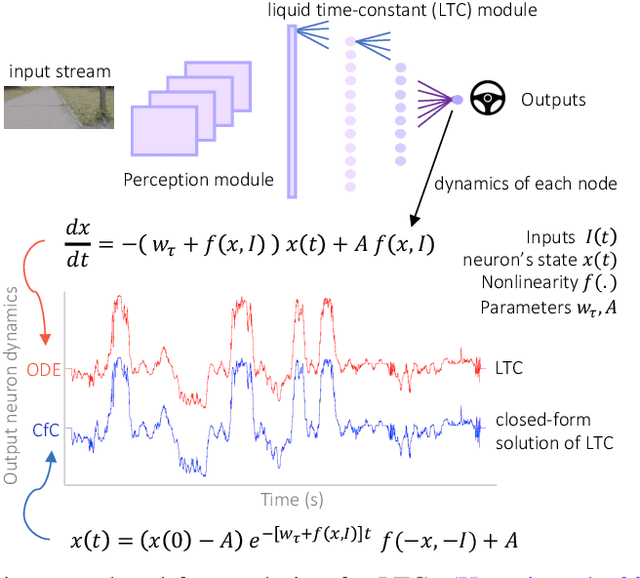
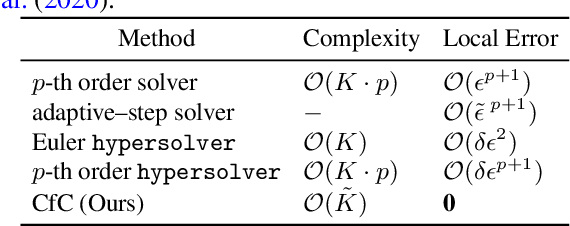
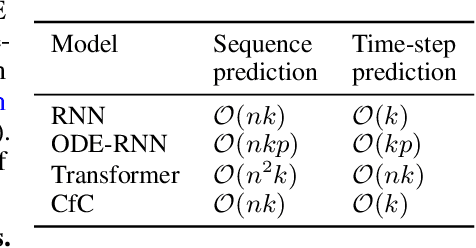

Abstract:Continuous-depth neural models, where the derivative of the model's hidden state is defined by a neural network, have enabled strong sequential data processing capabilities. However, these models rely on advanced numerical differential equation (DE) solvers resulting in a significant overhead both in terms of computational cost and model complexity. In this paper, we present a new family of models, termed Closed-form Continuous-depth (CfC) networks, that are simple to describe and at least one order of magnitude faster while exhibiting equally strong modeling abilities compared to their ODE-based counterparts. The models are hereby derived from the analytical closed-form solution of an expressive subset of time-continuous models, thus alleviating the need for complex DE solvers all together. In our experimental evaluations, we demonstrate that CfC networks outperform advanced, recurrent models over a diverse set of time-series prediction tasks, including those with long-term dependencies and irregularly sampled data. We believe our findings open new opportunities to train and deploy rich, continuous neural models in resource-constrained settings, which demand both performance and efficiency.
Sparse Flows: Pruning Continuous-depth Models
Jun 24, 2021



Abstract:Continuous deep learning architectures enable learning of flexible probabilistic models for predictive modeling as neural ordinary differential equations (ODEs), and for generative modeling as continuous normalizing flows. In this work, we design a framework to decipher the internal dynamics of these continuous depth models by pruning their network architectures. Our empirical results suggest that pruning improves generalization for neural ODEs in generative modeling. Moreover, pruning finds minimal and efficient neural ODE representations with up to 98\% less parameters compared to the original network, without loss of accuracy. Finally, we show that by applying pruning we can obtain insightful information about the design of better neural ODEs.We hope our results will invigorate further research into the performance-size trade-offs of modern continuous-depth models.
Low-Regret Active learning
Apr 06, 2021



Abstract:We develop an online learning algorithm for identifying unlabeled data points that are most informative for training (i.e., active learning). By formulating the active learning problem as the prediction with sleeping experts problem, we provide a framework for identifying informative data with respect to any given definition of informativeness. At the core of our work is an efficient algorithm for sleeping experts that is tailored to achieve low regret on predictable (easy) instances while remaining resilient to adversarial ones. This stands in contrast to state-of-the-art active learning methods that are overwhelmingly based on greedy selection, and hence cannot ensure good performance across varying problem instances. We present empirical results demonstrating that our method (i) instantiated with an informativeness measure consistently outperforms its greedy counterpart and (ii) reliably outperforms uniform sampling on real-world data sets and models.
Lost in Pruning: The Effects of Pruning Neural Networks beyond Test Accuracy
Mar 04, 2021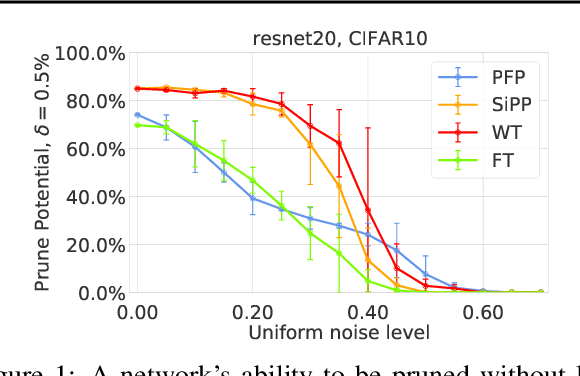

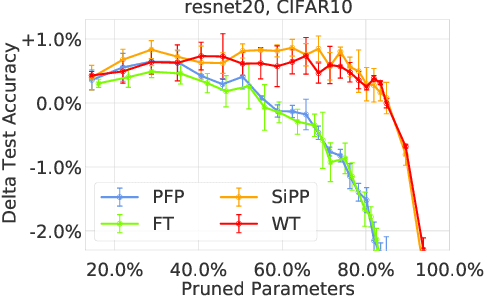
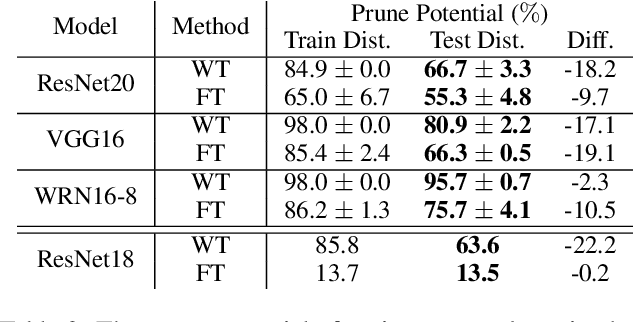
Abstract:Neural network pruning is a popular technique used to reduce the inference costs of modern, potentially overparameterized, networks. Starting from a pre-trained network, the process is as follows: remove redundant parameters, retrain, and repeat while maintaining the same test accuracy. The result is a model that is a fraction of the size of the original with comparable predictive performance (test accuracy). Here, we reassess and evaluate whether the use of test accuracy alone in the terminating condition is sufficient to ensure that the resulting model performs well across a wide spectrum of "harder" metrics such as generalization to out-of-distribution data and resilience to noise. Across evaluations on varying architectures and data sets, we find that pruned networks effectively approximate the unpruned model, however, the prune ratio at which pruned networks achieve commensurate performance varies significantly across tasks. These results call into question the extent of \emph{genuine} overparameterization in deep learning and raise concerns about the practicability of deploying pruned networks, specifically in the context of safety-critical systems, unless they are widely evaluated beyond test accuracy to reliably predict their performance. Our code is available at https://github.com/lucaslie/torchprune.
Deep Latent Competition: Learning to Race Using Visual Control Policies in Latent Space
Feb 19, 2021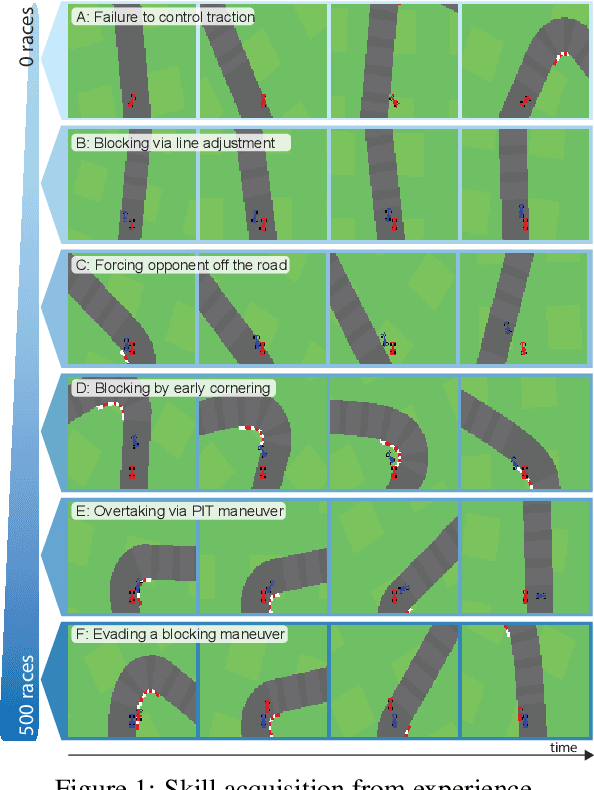
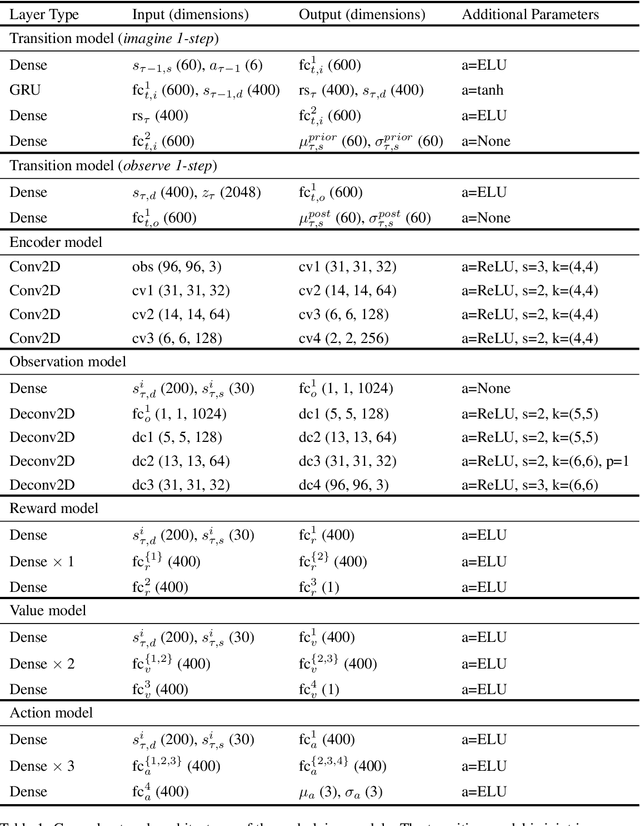
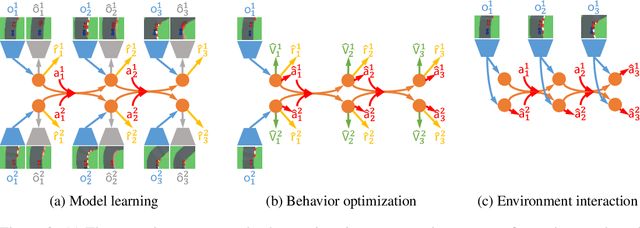
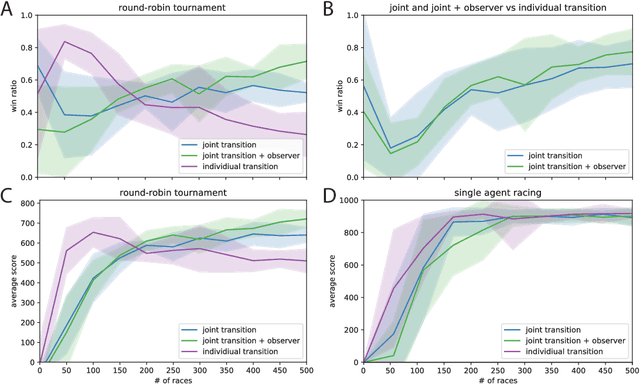
Abstract:Learning competitive behaviors in multi-agent settings such as racing requires long-term reasoning about potential adversarial interactions. This paper presents Deep Latent Competition (DLC), a novel reinforcement learning algorithm that learns competitive visual control policies through self-play in imagination. The DLC agent imagines multi-agent interaction sequences in the compact latent space of a learned world model that combines a joint transition function with opponent viewpoint prediction. Imagined self-play reduces costly sample generation in the real world, while the latent representation enables planning to scale gracefully with observation dimensionality. We demonstrate the effectiveness of our algorithm in learning competitive behaviors on a novel multi-agent racing benchmark that requires planning from image observations. Code and videos available at https://sites.google.com/view/deep-latent-competition.
Machine Learning-based Estimation of Forest Carbon Stocks to increase Transparency of Forest Preservation Efforts
Dec 17, 2019

Abstract:An increasing amount of companies and cities plan to become CO2-neutral, which requires them to invest in renewable energies and carbon emission offsetting solutions. One of the cheapest carbon offsetting solutions is preventing deforestation in developing nations, a major contributor in global greenhouse gas emissions. However, forest preservation projects historically display an issue of trust and transparency, which drives companies to invest in transparent, but expensive air carbon capture facilities. Preservation projects could conduct accurate forest inventories (tree diameter, species, height etc.) to transparently estimate the biomass and amount of stored carbon. However, current rainforest inventories are too inaccurate, because they are often based on a few expensive ground-based samples and/or low-resolution satellite imagery. LiDAR-based solutions, used in US forests, are accurate, but cost-prohibitive, and hardly-accessible in the Amazon rainforest. We propose accurate and cheap forest inventory analyses through Deep Learning-based processing of drone imagery. The more transparent estimation of stored carbon will create higher transparency towards clients and thereby increase trust and investment into forest preservation projects.
Provable Filter Pruning for Efficient Neural Networks
Nov 18, 2019



Abstract:We present a provable, sampling-based approach for generating compact Convolutional Neural Networks (CNNs) by identifying and removing redundant filters from an over-parameterized network. Our algorithm uses a small batch of input data points to assign a saliency score to each filter and constructs an importance sampling distribution where filters that highly affect the output are sampled with correspondingly high probability. In contrast to existing filter pruning approaches, our method is simultaneously data-informed, exhibits provable guarantees on the size and performance of the pruned network, and is widely applicable to varying network architectures and data sets. Our analytical bounds bridge the notions of compressibility and importance of network structures, which gives rise to a fully-automated procedure for identifying and preserving filters in layers that are essential to the network's performance. Our experimental evaluations on popular architectures and data sets show that our algorithm consistently generates sparser and more efficient models than those constructed by existing filter pruning approaches.
SiPPing Neural Networks: Sensitivity-informed Provable Pruning of Neural Networks
Oct 11, 2019



Abstract:We introduce a pruning algorithm that provably sparsifies the parameters of a trained model in a way that approximately preserves the model's predictive accuracy. Our algorithm uses a small batch of input points to construct a data-informed importance sampling distribution over the network's parameters, and adaptively mixes a sampling-based and deterministic pruning procedure to discard redundant weights. Our pruning method is simultaneously computationally efficient, provably accurate, and broadly applicable to various network architectures and data distributions. Our empirical comparisons show that our algorithm reliably generates highly compressed networks that incur minimal loss in performance relative to that of the original network. We present experimental results that demonstrate our algorithm's potential to unearth essential network connections that can be trained successfully in isolation, which may be of independent interest.
 Add to Chrome
Add to Chrome Add to Firefox
Add to Firefox Add to Edge
Add to Edge